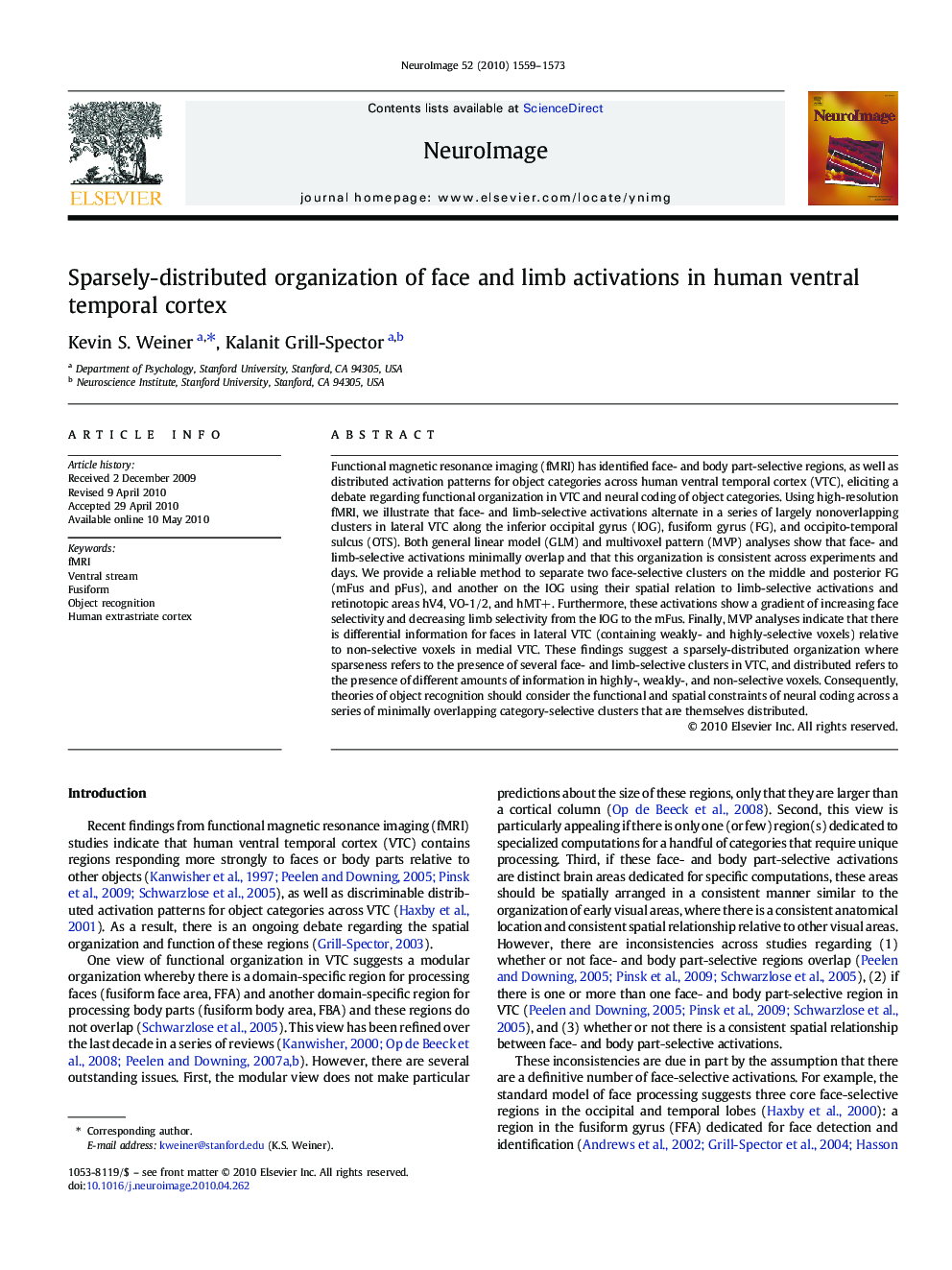| کد مقاله | کد نشریه | سال انتشار | مقاله انگلیسی | نسخه تمام متن |
|---|---|---|---|---|
| 6035376 | 1188764 | 2010 | 15 صفحه PDF | دانلود رایگان |

Functional magnetic resonance imaging (fMRI) has identified face- and body part-selective regions, as well as distributed activation patterns for object categories across human ventral temporal cortex (VTC), eliciting a debate regarding functional organization in VTC and neural coding of object categories. Using high-resolution fMRI, we illustrate that face- and limb-selective activations alternate in a series of largely nonoverlapping clusters in lateral VTC along the inferior occipital gyrus (IOG), fusiform gyrus (FG), and occipito-temporal sulcus (OTS). Both general linear model (GLM) and multivoxel pattern (MVP) analyses show that face- and limb-selective activations minimally overlap and that this organization is consistent across experiments and days. We provide a reliable method to separate two face-selective clusters on the middle and posterior FG (mFus and pFus), and another on the IOG using their spatial relation to limb-selective activations and retinotopic areas hV4, VO-1/2, and hMT+. Furthermore, these activations show a gradient of increasing face selectivity and decreasing limb selectivity from the IOG to the mFus. Finally, MVP analyses indicate that there is differential information for faces in lateral VTC (containing weakly- and highly-selective voxels) relative to non-selective voxels in medial VTC. These findings suggest a sparsely-distributed organization where sparseness refers to the presence of several face- and limb-selective clusters in VTC, and distributed refers to the presence of different amounts of information in highly-, weakly-, and non-selective voxels. Consequently, theories of object recognition should consider the functional and spatial constraints of neural coding across a series of minimally overlapping category-selective clusters that are themselves distributed.
Journal: NeuroImage - Volume 52, Issue 4, 1 October 2010, Pages 1559-1573